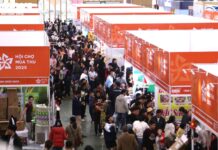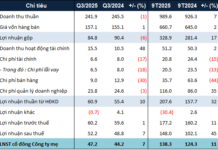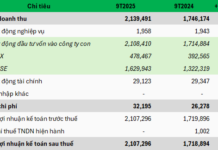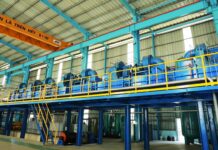Vietnam’s Semiconductor Industry: Leveraging Geopolitical Advantages and Building a Global Talent Hub

At the recent conference on Vietnam’s national semiconductor industry strategy, Minister of Information and Communications Nguyen Manh Hung outlined the country’s distinct advantages in the sector.
Firstly, Vietnam possesses a favorable geopolitical position within the global semiconductor industry. With Vietnam as the center, 80% of the world’s semiconductor industry is within reach, making the country a global hub.
Secondly, Vietnam’s human resources hold a strong advantage in science and technology, which is on par with the country’s geopolitical advantages.
Thirdly, the global semiconductor industry is undergoing a restructuring towards “X+1,” which encompasses the entire industry beyond just manufacturing. This includes research and development, placing emphasis on human capital and semiconductor expertise. The United States currently faces a shortage of human resources in chip design, and Vietnam is among a select group of countries that can provide this expertise. The global shortage of semiconductor industry professionals is expected to be short-term rather than long-term.
Vietnam ranks second globally in reserves of rare earth minerals used in the semiconductor industry, following China, with reserves equivalent to half of China’s. Vietnam is also one of the few countries with 20 years of experience in the semiconductor industry, providing a solid foundation for further development. The country has expertise in assembly, design, and casting, with over 6,000 engineers working in the field.
Recognizing these opportunities and challenges, Vietnam’s semiconductor industry strategy has been formulated with the following key principles:
1. Develop a comprehensive semiconductor industry over a 30-year period (2023-2050) with clear milestones. The strategy divides this period into three phases: 2023-2030, 2030-2040, and 2040-2050. During this period, Vietnam aims to master all stages of semiconductor production and become a major market in the industry.
2. Integrate the development of the semiconductor industry with other key industries, including digital transformation. Semiconductors are essential inputs for the electronics industry, and mastering the semiconductor industry is crucial for dominating the electronics market. All successful semiconductor-producing countries in the region, such as South Korea, Japan, and China, have developed robust electronics industries. A recent study has shown that no country has achieved significant economic growth without a strong electronics industry, and more recently, a digital transformation industry. Relying solely on semiconductor production would make Vietnam dependent on external demand from electronics manufacturers.
3. Establish Vietnam as a global talent hub for the semiconductor industry by 2030. This talent pool will serve as a magnet for research and manufacturing activities in Vietnam. “The primary way to meet the demand for human resources is through short-term retraining and direct training. While other countries require about two years to train an electrical engineer for the semiconductor industry, Vietnam can do it in just 3-6 months or 12 months,” said the Minister.
Additionally, human capital is at the core of developing the semiconductor industry. A national agreement is required to secure a steady supply of qualified personnel to ensure the success of the industry’s workforce. Training programs must be guided by market signals, with partnerships between businesses and international collaborations.
4. Strike a balance between attracting foreign direct investment (FDI) and promoting domestic self-reliance. Vietnam aims to achieve long-term self-sufficiency in the semiconductor industry while continuing to attract foreign investment in various stages of the industry, including manufacturing. While Vietnam has been successful in attracting FDI, it needs to improve its self-reliance. Both approaches should be pursued in parallel.
5. Foster a semiconductor industry ecosystem. Without supporting small and medium-sized enterprises (SMEs) in the semiconductor sector or providing them with the resources they need, the country’s human capital strategy will face challenges. Therefore, developing a semiconductor industry within a national ecosystem is essential. In the short term, this ecosystem could involve collaboration with other countries.
Globally, there is an ongoing race to attract FDI in the semiconductor industry. Vietnam should leverage its geopolitical advantages, human capital, and infrastructure to enhance its competitiveness.
“In addition, the semiconductor industry is characterized by its importance to national security, which underscores the critical role of government leadership. The strategy also emphasizes the importance of SMEs and large corporations in the development of the semiconductor industry, ensuring flexibility, particularly among SMEs,” concluded Minister Nguyen Manh Hung.





































